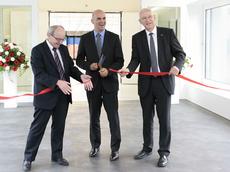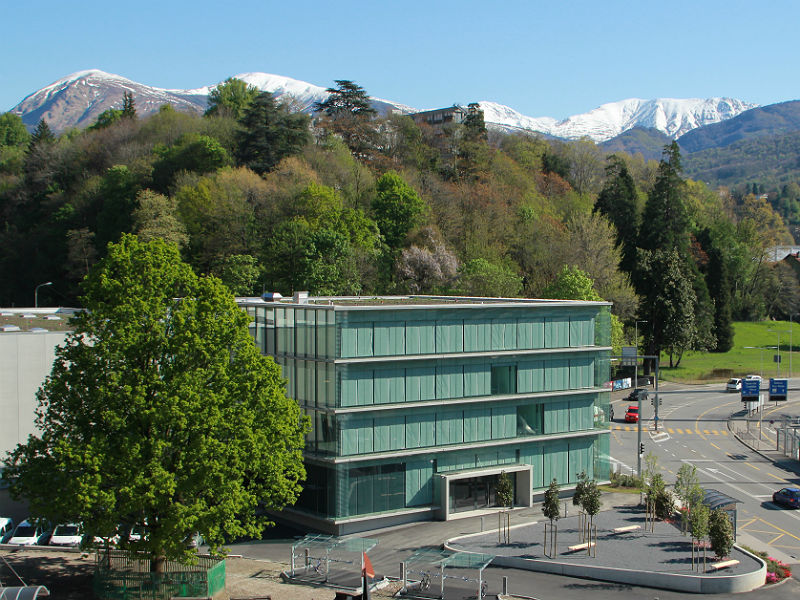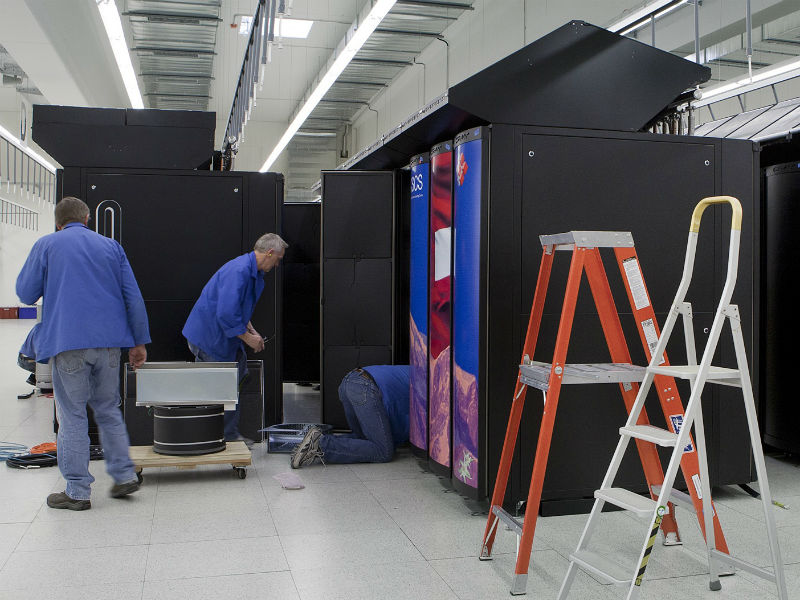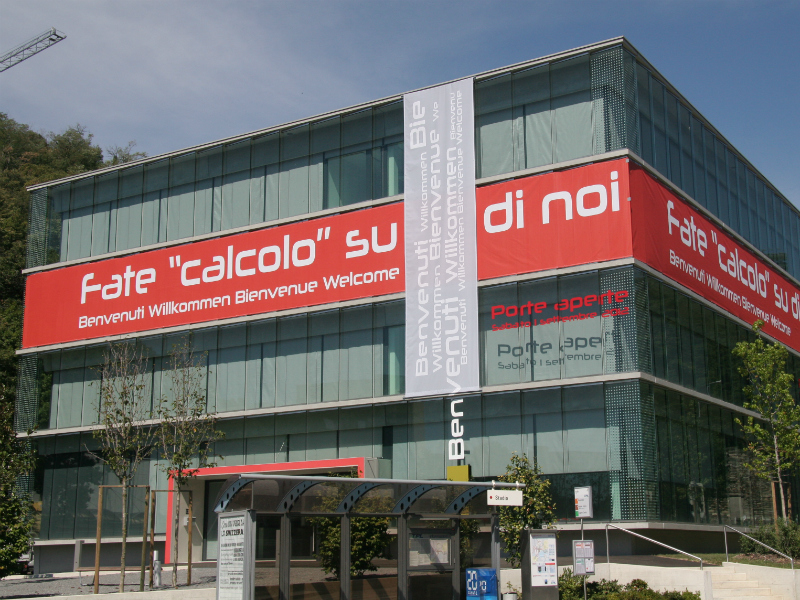New home for Supercomputing in Lugano
Representatives from politics and science have inaugurated the new CSCS building in Lugano. The new building, with its supercomputers, should secure Switzerland’s competitiveness in the area of high-performance computing.

After almost two years in the making, Switzerland has a new high-performance computing centre – one of the most energy-efficient ones in the world. Federal Councillor Alain Berset inaugurated the new CSCS building at a ceremony on Friday. CSCS (Swiss National Supercomputing Centre) in Lugano-Cornaredo is the part of the national High-Performance Computing and Networking Strategy that has been “set in stone”.
Federal Councillor Alain Berset, President of the ETH Board Fritz Schiesser and President of ETH Zurich Ralph Eichler cut the symbolic ribbon to officially open the new CSCS building. “The investment in this infrastructure is a long-term commitment for world-class research and part of an education and research policy that is designed to make a lasting contribution to the wellbeing of the country,” said Federal Councillor Berset.
Securing a competitive position
The new CSCS building should help to ensure that future supercomputers of the Swiss National Supercomputing Centre are operated optimally and energy-efficiently. CSCS’s supercomputers are available to all Swiss universities and research facilities. Thanks to the new building, Switzerland as a research location will benefit in all areas relating to high-performance computing (HPC). “High-performance computers are a key prerequisite for the global competitiveness of Swiss universities,” stressed President of the ETH Board Fritz Schiesser.
Scientists endeavour to solve complex problems with the aid of supercomputers. These days simulations come into play wherever experiments are no longer possible or traditional methods no longer suffice. Researchers use simulations to predict the weather, evaluate natural hazards more effectively, model novel materials, or aid medical diagnostics. High-performance computing supplements theory and experiments as a matter of course in practically all research disciplines. Since 2010 alone, the demand for computer time at the CSCS has almost doubled – in 2012 around 325 million computer hours were allocated among users.
Location boosts “intellectual and cultural diversity”
Due to the constantly rising demand for computing power, the spatial and technical capacities of the old headquarters in Manno were no longer adequate. Consequently, the new building on Via Trevano in Lugano was necessary. President of ETH Zurich Ralph Eichler sees two advantages in the new location: “Firstly, the computers can be cooled with water from nearby Lake Lugano; secondly, the collaboration with researchers from the Università della Svizzera italiana is an enormous asset and boosts intellectual and cultural diversity.”
For the Executive Board of ETH Zurich, it was essential for the new computer centre to be able to accommodate the necessary supercomputing infrastructure for at least the next forty years. The computer centre was thus built as a modular construction that can easily be further developed if needed. Beginning in 2013, a computer of the petaflop performance class is to be deployed at the CSCS. As the supercomputers are cooled via a sophisticated system that uses natural resources in the form of water from Lake Lugano, CSCS is currently one of the most energy-efficient computer centres in the world.
New building part of the HPCN strategy
The new CSCS building is part of the High-Performance Computing and Networking Strategy (HPCN), which was developed by the ETH Board and approved by the federal Council and Parliament in 2009. The cost to the federal government for the new HPCN building, including the lake-water cooling system, was estimated at CHF 67.5 million. In addition, the Canton of Ticino contributed CHF 5 million. Moreover, the City of Lugano granted CSCS the building lease for the land in the Lugano district of Cornaredo for forty years and facilitated the implementation and construction of the lake-water cooling system.










READER COMMENTS